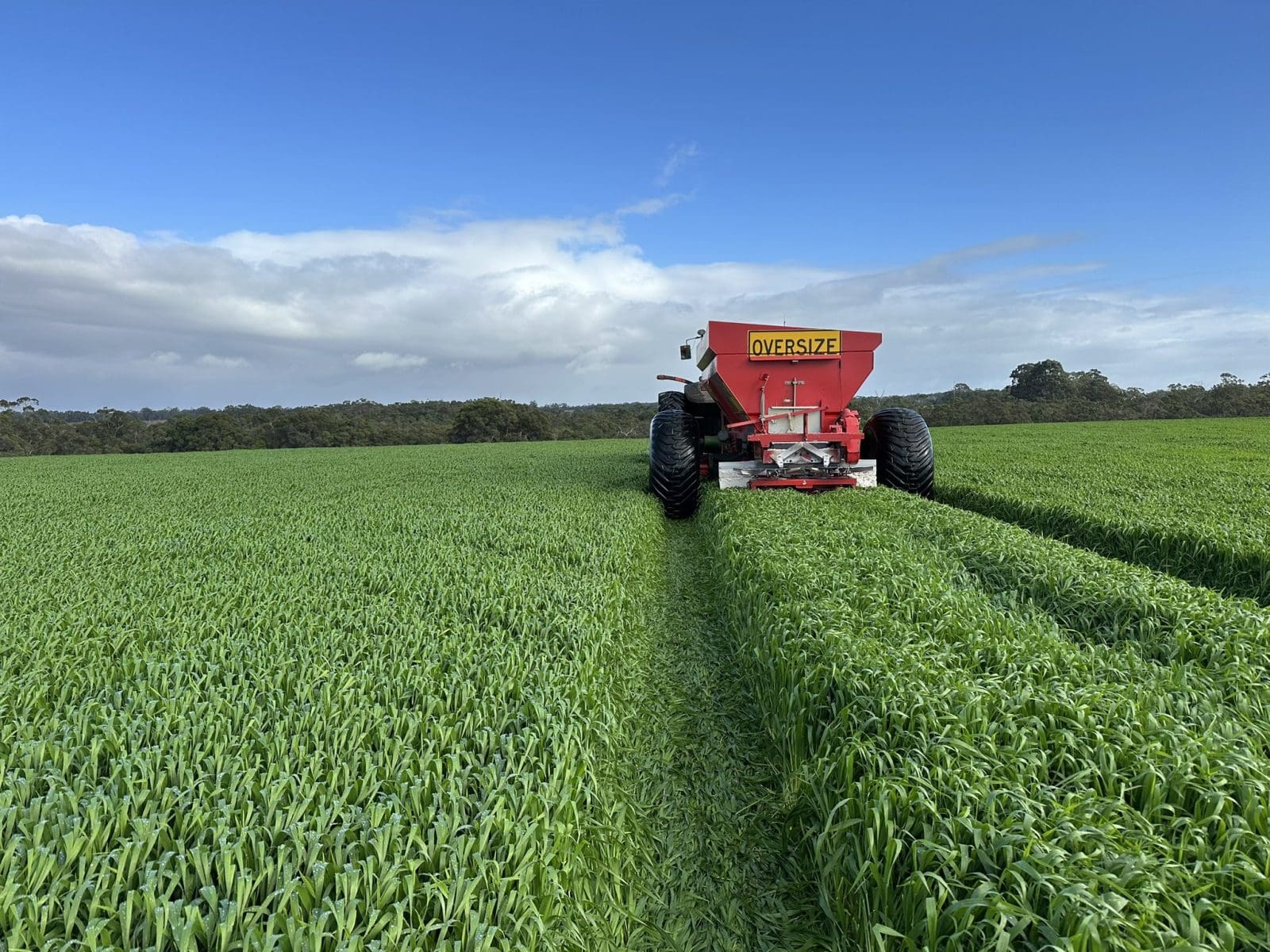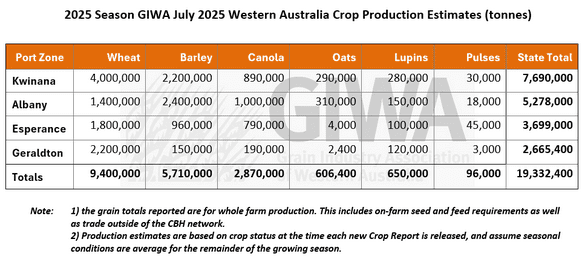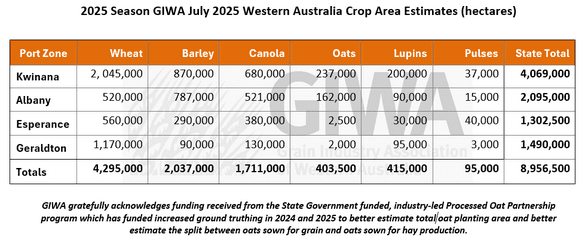
A thriving crop of Neo barley in WA’s Mt Barker district north of Albany being top-dressed with urea. Photo: Aaron Dupe, Southern Ag Contracting
WESTERN Australia is forecast to produce a winter crop weighing in at 19.3 million tonnes (Mt), according to the Grain Industry of WA crop report released today.
This is GIWA’s initial estimate for the 2025-26 crop, with area now seen at 8.96M hectares, down from 9.03Mha seen last month.
GIWA estimates WA harvested 22.42Mt of grain from around 9Mha in the 2024-25 crop year.
In the report, author Michael Lamond said widespread rain over the past week has transformed the majority of the grainbelt from “a dry dusty wreck”, particularly in the central regions, to a scene of fresh optimism.
“The season was slipping away from many but the rainfall has turned around the prospects for reasonable crop yield potentials,” Mr Lamond said in the report.
“However, there are still pockets of country across the grainbelt where the rain has been too little too late, and these areas will struggle, no matter what happens from now on.”

Mr Lamond said the staggered timing of crop emergence in the WA grainbelt, both across and within regions, has made predictions of final outcomes difficult at this point in the growing season.
“Areas of the state that emerged early are in very good shape and are packing on biomass that will set them up for above-average grain yields, provided they continue to get top-up rainfall over the next few months.
“Crops in these areas are as good as the record tonnage years of 2021 and 2022, although it is still a long way to go until harvest.
“To hit these very high tonnages, they will need to continue to receive regular rain and mild finishing conditions.”
Mr Lamond said areas that emerged later were behind in growth stage, and were struggling until the rain of recent days.
GIWA estimates around 4Mha hectares had emerged by June 1, mostly in the Esperance, south coast, west Albany port zone and corridors north to the central regions.
A further 4.6Mha had emerged by mid-June.
“The remaining 300,000ha of planted area has only recently come through the ground.
“The later-emerged crops, particularly those in the low-rainfall regions, are going to need a very good run from now on to achieve average grain yields at harvest time.
“With the current soil-available moisture low in all grain-growing regions, the rain from now on is going to need to be above average to achieve a state total of 20Mt of total grain.”
Mr Lamond said dry conditions until now meant crops have had “a dream run for disease”.
“The slight shift from wheat to barley area seems to be paying off, as the barley is very clean and the earlier-sown barley crops will blitz wheat yields if the season tightens up from now on.
“In saying that, most wheat crops are in good shape, except for the later-emerged areas in the low-rainfall areas of the Kwinana North East and Kwinana South zones.
“Many of these wheat crops have below-average grain-yield potential at this stage of the season.”

The report said canola crops were mixed across the regions, with very high yield potential in the higher-rainfall regions right through the spectrum to below-breakeven yield potential in the later-emerged lower-rainfall regions, where plant density is low and variable across paddocks.
Lupin crops in the inland areas have been slow to grow due to cold, but are more advanced closer to the west and south coastal areas where they emerged earlier and have the warmer coastal influence.
“Oat area intended for grain increased again this year in the dedicated grain-growing regions, with the majority of these areas coinciding with the later break to the season and less rain since emergence.”
Pulse crops in the Esperance region have benefited from the early start, but in the remainder of the state where a slight increase in pulse plantings has been seen, crops have emerged late and will need a good spring to hit reasonable yields.
Source: GIWA
Further detail on crop conditions in individual WA port zones can be found as part of the full report on the GIWA website.

HAVE YOUR SAY